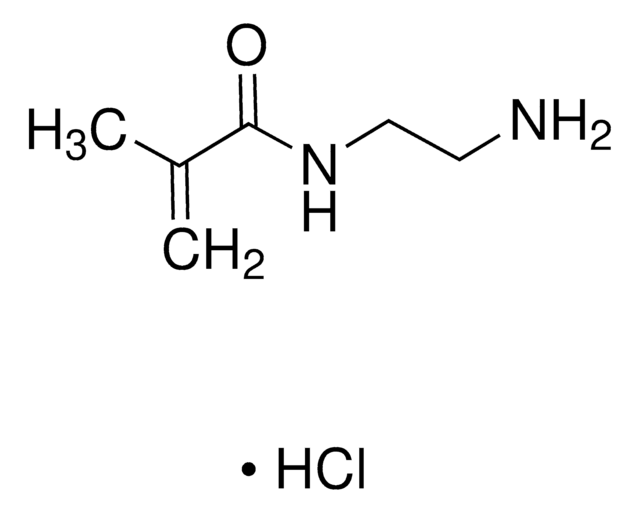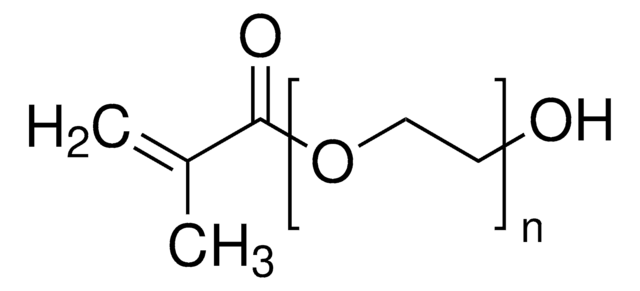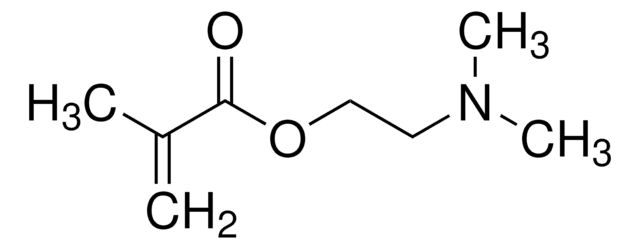907081
Methacrylamide poly(ethylene glycol) amine hydrochloride
average Mn 400, cross-linking reagent polymerization reactions
Sinônimo(s):
Methacrylamide poly(ethylene glycol) amine, PEG amine monomethacrylamide, PEG diamine mono methacrylamide, PEG methacrylamide, PEG monomethacrylamide, Polyethylene glycol
About This Item
Produtos recomendados
product name
Methacrylamide poly(ethylene glycol) amine hydrochloride, average Mn 400
forma
liquid
peso molecular
average Mn 400 (by NMR)
average Mn 400
adequação da reação
reagent type: cross-linking reagent
reaction type: Polymerization Reactions
cor
pale yellow
arquitetura do polímero
shape: linear
functionality: heterobifunctional
temperatura de armazenamento
2-8°C
Aplicação
Código de classe de armazenamento
10 - Combustible liquids
Classe de risco de água (WGK)
WGK 3
Ponto de fulgor (°F)
>230.0 °F
Ponto de fulgor (°C)
> 110 °C
Escolha uma das versões mais recentes:
Certificados de análise (COA)
Não está vendo a versão correta?
Se precisar de uma versão específica, você pode procurar um certificado específico pelo número do lote ou da remessa.
Já possui este produto?
Encontre a documentação dos produtos que você adquiriu recentemente na biblioteca de documentos.
Nossa equipe de cientistas tem experiência em todas as áreas de pesquisa, incluindo Life Sciences, ciência de materiais, síntese química, cromatografia, química analítica e muitas outras.
Entre em contato com a assistência técnica

![N-[3-(Dimethylamino)propyl]methacrylamide 99%, contains MEHQ as inhibitor](/deepweb/assets/sigmaaldrich/product/structures/295/145/6b4aae15-7cb5-4b7b-9c06-8e6d24e50951/640/6b4aae15-7cb5-4b7b-9c06-8e6d24e50951.png)


![[2-(Methacryloyloxy)ethyl]trimethylammonium chloride solution 75 wt. % in H2O](/deepweb/assets/sigmaaldrich/product/structures/316/612/66b0f4cf-d060-427d-b4f5-e8fab3e5cffe/640/66b0f4cf-d060-427d-b4f5-e8fab3e5cffe.png)



